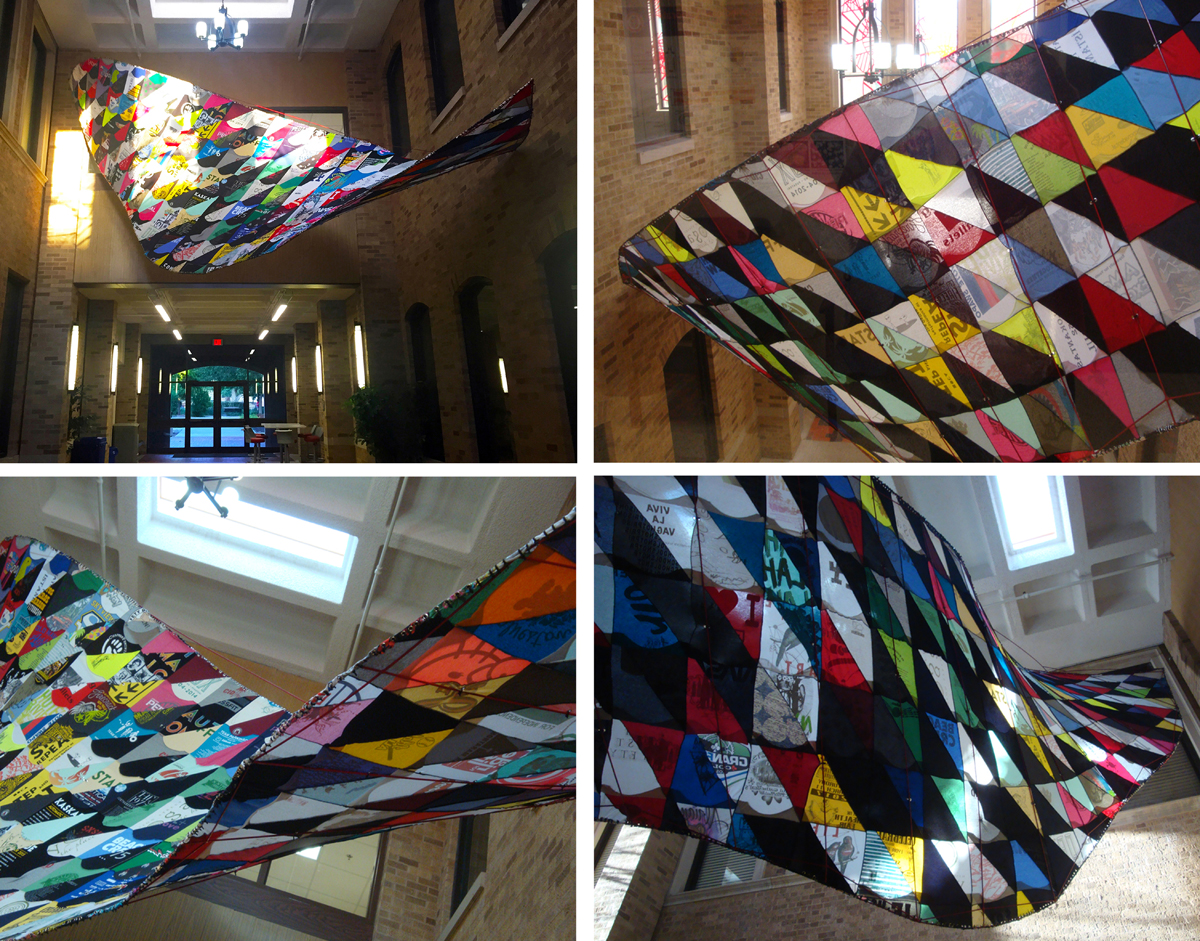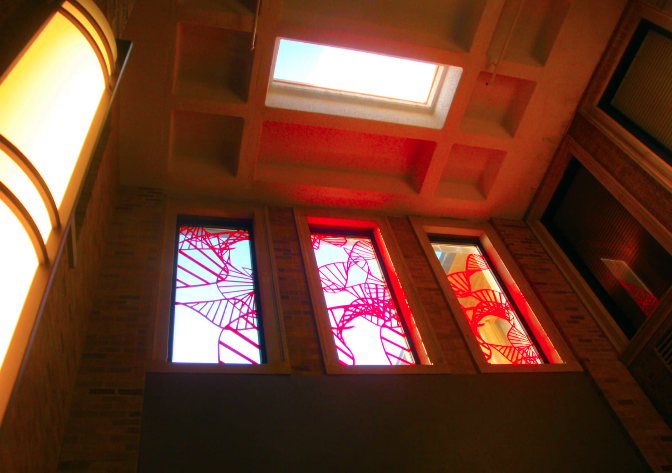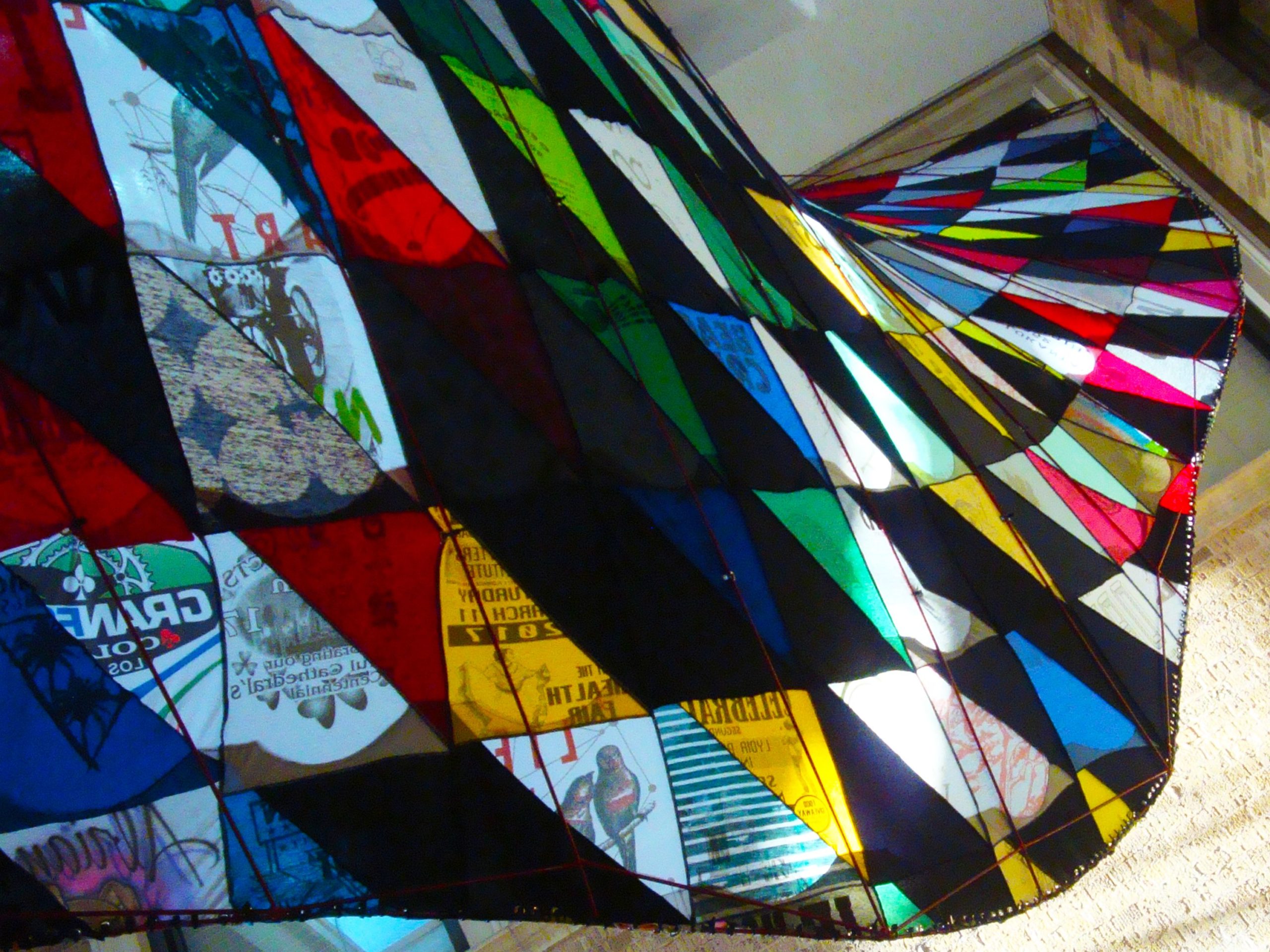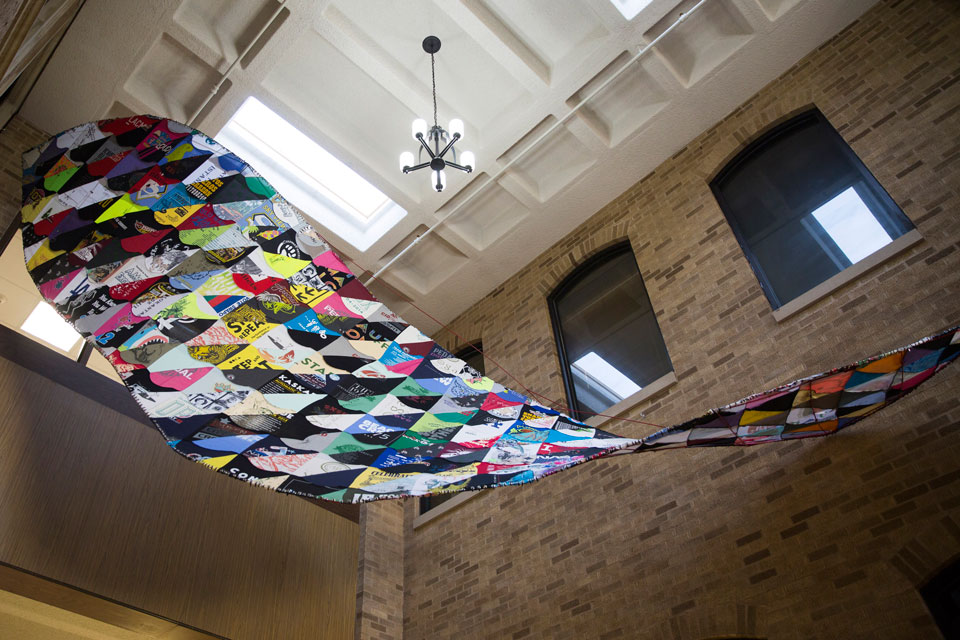‘Celestial Bodies’ a Collaborative, Interdisciplinary Art Installation
Led by artist-in-residency Ismael de Anda III, Red Raiders within the College of Human Sciences and the School of Art worked together to create a sustainable work of art using donated T-shirts.
Look up when you walk through the breezeway of the Texas Tech University Human Sciences Building and you will find yourself under a flying sculpture. Sewn together and stretched across a steel frame are more than 100 souvenir T-shirts donated by Red Raiders and the Lubbock community.
The art installation, “Celestial Bodies,” was created in a collaborative effort between students and faculty within the College of Human Sciences and the J.T. & Margaret Talkington College of Visual & Performing ArtsSchool of Art. For two weeks in September, they were led by visiting artist Ismael de Anda III and Rachel Anderson, an assistant professor of Apparel Design & Manufacturing, with sculpture students building and welding the steel armature and students in the Department of Design cutting, arranging and stitching together the donated shirts to create the canopy.
“This is the first installation located within the College of Human Sciences that students helped create,” Anderson said. “It’s really a crossover between fashion and art. It helped them to see people from different disciplines working together collaboratively as a team, and it showed them the process of working on something creative on a deadline.”
Raegan McGuire, a senior apparel design and manufacturing major from Dallas, said she worked as Anderson’s undergraduate assistant and helped coordinate students from different classes to stitch together the T-shirts for the canopy. The experience offered several opportunities for improving skills like teamwork, collaborative communication and tackling problems as they arose.
“I hope a lot of people have the same feelings we have, seeing that we’re a part of it, and it’s such an impressive project we get to include on our résumés,” McGuire said. “I hope people get the same feeling seeing their T-shirts up there. Like Ismael said, it’s everyone’s project. If you donated T-shirts, then it’s just as much yours. I think it’s admirable how much he wanted the community to be a part of everything.”
Visiting Texas Tech
Originally from El Paso, de Anda is an internationally exhibiting artist now living and working in Los Angeles. He also serves as an educator who leads workshops for artists of all ages.“Working with students has always been part of my artistic practice,” de Anda said. “I get to work with the next generation of artists and, hopefully, that keeps my practice fresh. I am also a big supporter of education. I think it’s very important to culture.”
De Anda was invited by Texas Tech alumna Francesca Vega, who was a recent graduate of the art history and political science master’s degree programs, to apply to the School of Art’s Visiting Artist Program. De Anda said he was very interested at the prospect of visiting Lubbock and working with the Lubbock community and students of Texas Tech for the first time. His proposal for an interactive installation was accepted and the sculpture was scheduled to be created during his two-week residency.
“The proposal was to interact with the community and the students, and coming in as a visiting artist, it was important for me to do that as much as I could,” he said. “I wanted to be able to give the students the opportunity to do something new or different. They’re talented and they’re donating their skills, and I appreciate their willingness to help. For me, as an artist, when I’ve had a chance to work with other artists, those experiences have been worth their weight in gold. Hopefully this was a beneficial experience for them as well.”
It also was important for him to use locally sourced materials and inspiration for the artwork, something he said he tries to do in many of his installations. During his time in Lubbock, de Anda visited the Silent Wings Museum and the American Wind Power Center, taking inspiration from local aviation and wind history, and from the local bird population. Some of this can be seen in the curvature of the steel armature, while the donated T-shirts serve as a representation of the local culture and the Lubbock cotton industry.
The shirts were cut and reconfigured, with re-stitched logos, to create what de Anda calls a “mutant canopy” in order to surpass the common concept of a quilt or banner for commercial advertising. The result was a contemporary artwork that also functions as an archive reflecting the community and history of Lubbock.







